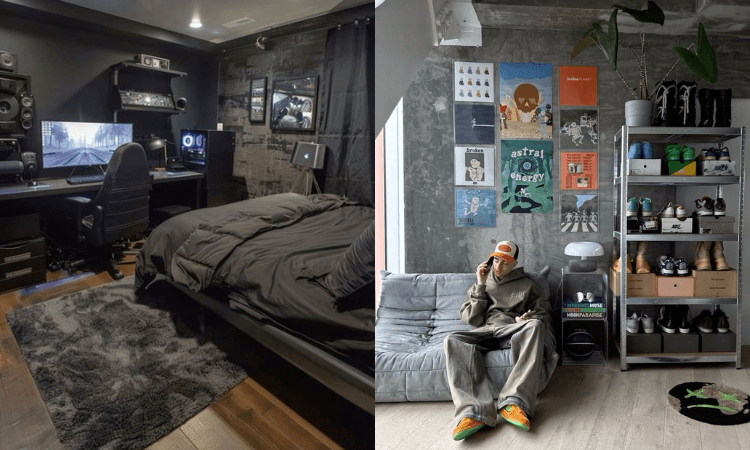Choosing the right rug for your space can elevate a room’s aesthetic while providing comfort and practicality. Rugs come in many shapes, sizes, materials, and designs, making the decision seem overwhelming. However, by understanding the unique needs of your room, you can make a choice that complements your space and enhances its overall feel. In this guide, we’ll walk you through the essential tips to help you pick the perfect rug for your home. Whether you’re looking to add warmth to a cozy living room or brighten up a bedroom, we’ve got you covered.
Understand Your Room’s Needs

Before selecting a rug, it’s crucial to understand your room’s layout and how you plan to use the space. Knowing these factors will help you choose a rug that complements the size, style, and function of your room.
Consider Room Size and Layout
When choosing a rug, it’s essential to take measurements of your room. A rug should fit proportionally within the space, leaving some visible floor around the edges for balance.
- For larger rooms, opt for a rug that can anchor the furniture, ensuring enough space around it for an open feel.
- In smaller rooms, a smaller rug can add warmth without overwhelming the space.
- Consider leaving about 6-12 inches of floor showing between the edge of the rug and the walls to create a frame.
Having a rug that fits the layout and size of your room will help tie the decor together and make the space feel cohesive.
Define the Purpose of the Rug
Think about how the rug will be used. Are you placing it in a high-traffic area like a hallway, or is it intended as a decorative piece in the bedroom?
- For high-traffic areas like living rooms and entryways, durability is key.
- In dining rooms, ensure the rug is large enough to fit under the table and chairs.
- If the rug is for comfort, like in a bedroom, you may want something soft underfoot.
Knowing the rug’s function will guide you toward the right size, material, and thickness.
Think About Foot Traffic
Rooms with heavy foot traffic require rugs made from durable materials that can withstand wear and tear.
- High-traffic areas benefit from synthetic or wool rugs, which are known for durability.
- If the rug will be in a less-traveled space, you can opt for delicate materials like silk or cotton.
- Rugs with short, tight pile are easier to clean and maintain in high-traffic areas.
Choosing the right material based on foot traffic ensures the rug lasts longer and stays looking fresh.
Choose the Right Material
The material of the rug plays a significant role in its durability, comfort, and appearance. Wool is a popular choice for its durability and softness, making it perfect for high-traffic areas. It’s naturally stain-resistant and adds warmth, which is great for colder months. Synthetic rugs, made from materials like nylon or polyester, are budget-friendly and easy to clean, making them ideal for homes with children or pets. They’re resistant to stains and fading, which makes them low-maintenance. If you’re looking for an eco-friendly option, natural fiber rugs like jute, sisal, and cotton are great choices. These materials are sustainable and add a natural, textured look to the room, though they require more care than synthetic options.
Match Your Rug with the Room’s Style
To ensure your rug enhances the room’s design, match it with the room’s overall style. For modern spaces, look for rugs with simple, geometric patterns in neutral colors. Traditional rooms, on the other hand, benefit from rugs with rich, detailed patterns and deep colors. If your home features a boho or eclectic style, choose a rug with vibrant colors and mixed patterns to add a sense of personality. The color and pattern of the rug should complement the room’s furniture and decor, either by contrasting with neutral elements or blending with vibrant tones. When choosing the shape, think about the layout of the room. Square rugs are good for smaller areas, round rugs work well for softening corners, and runners are ideal for narrow spaces like hallways.
Care and Maintenance Considerations
Caring for your rug is essential to ensure it remains in excellent condition for years to come. Proper maintenance will help preserve its beauty and longevity.
Cleaning Your Rug
Regular cleaning is key to keeping your rug looking fresh. Here’s how to maintain it:
- Vacuum your rug at least once a week to remove dirt and debris.
- For spills, blot the stain immediately with a clean cloth, and avoid scrubbing.
- Professional cleaning may be required for deeper stains or to remove odors.
Cleaning your rug regularly ensures it stays vibrant and extends its lifespan.
Protecting Your Rug from Damage
Rug damage can be prevented with proper care. Here are some tips:
- Use a rug pad underneath to prevent slipping and add extra cushioning.
- Rotate your rug every few months to ensure even wear.
- Avoid placing rugs in direct sunlight to prevent fading.
These simple steps can help maintain your rug’s appearance and prevent unnecessary wear.
Budget and Quality
Setting a budget is essential when shopping for a rug. Synthetic rugs are typically more affordable, while wool and silk options are more expensive but offer better durability and comfort. If you’re working within a budget, look for sales or smaller-sized rugs, which can still make a statement without costing too much. Higher-quality rugs, such as wool or silk, last longer, which makes them a good investment in the long run. Though they may have a higher upfront cost, they add lasting value to your home and can even improve resale value.
Conclusion
Choosing the right rug is about more than just style—it’s about finding the perfect balance between aesthetics, functionality, and durability. By considering factors like room size, material, style, and budget, you can select a rug that complements your space and lasts for years. Whether you’re furnishing a new home or revamping an existing room, the right rug can make all the difference.




